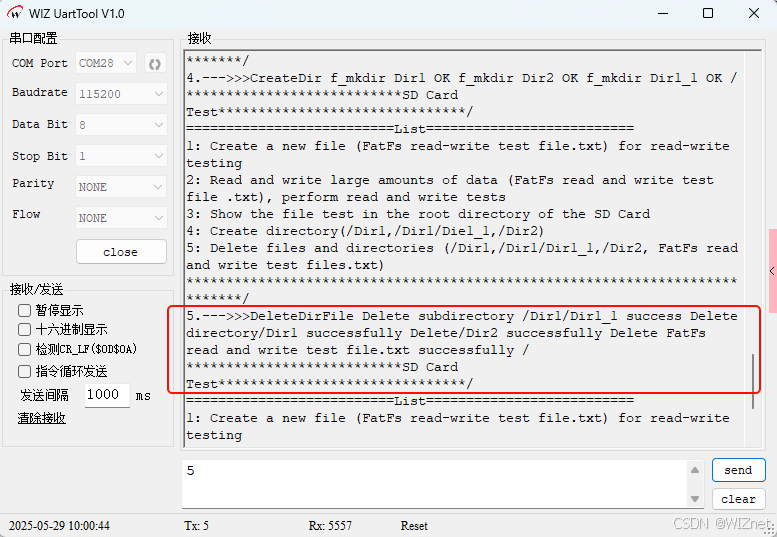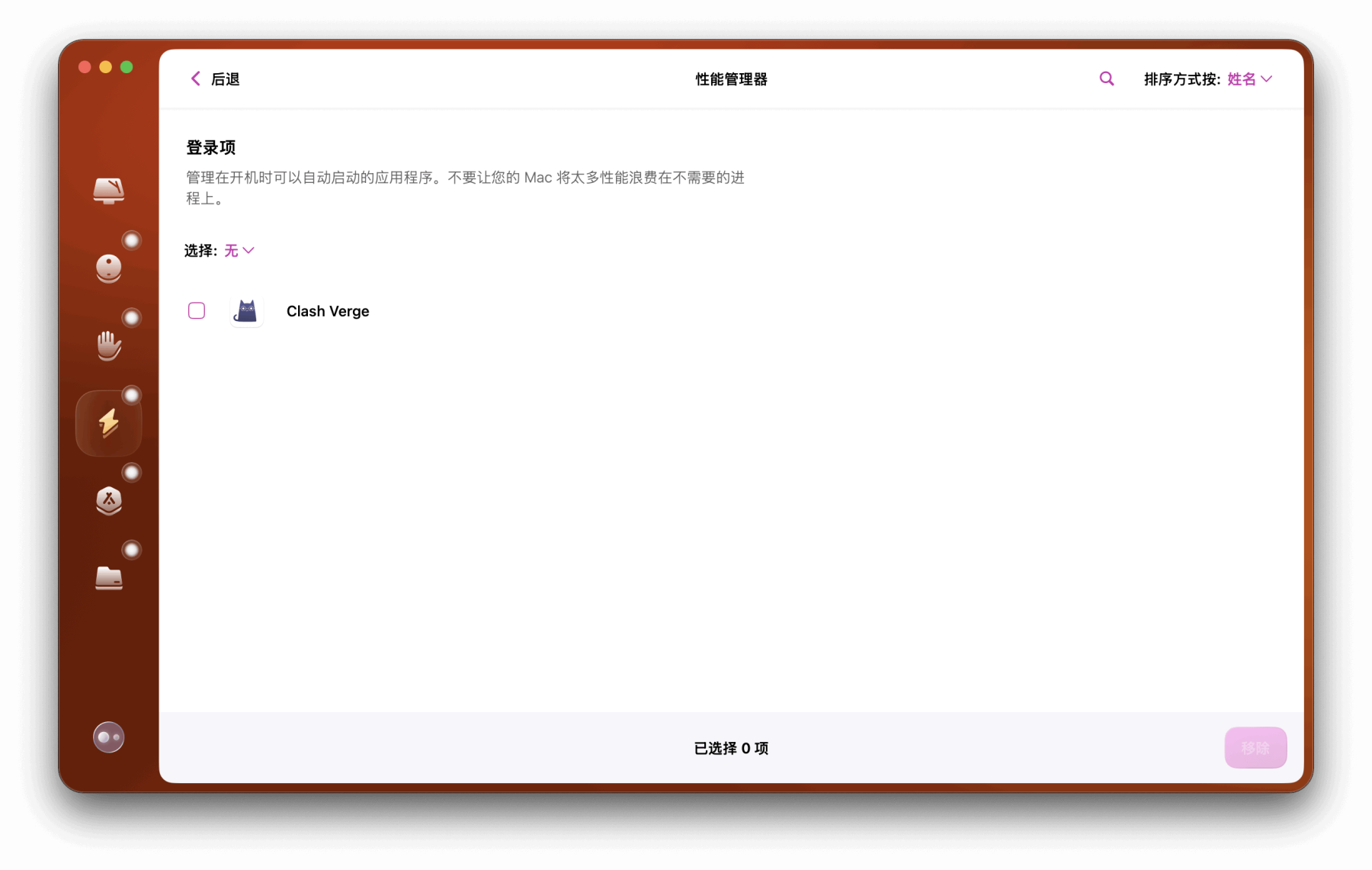IO进程线程day8(2023.8.6)
一、Xmind整理:
管道的原理:

有名管道的特点:

信号的原理:

二、课上练习:
练习1:pipe
功能:创建一个无名管道,同时打开无名管道的读写端
原型:
#include <unistd.h>
int pipe(int pipefd[2]); int* pfd; int pfd[]参数:
int pipefd[2]:函数运行完毕后,该参数指向的数组中会存储两个文件描述符;
pipefd[0]: 读端文件描述符;
pipefd[1]: 写端文件描述符;返回值:
成功,返回0;
失败,返回-1,更新errno;小练:
#include <stdio.h>
#include <string.h>
#include <stdlib.h>
#include <head.h>
int main(int argc, const char *argv[])
{//管道的创建必须放在fork函数前//若放在fork函数后,会导致父子进程各自创建一根管道//此时会导致父子进程各自操作各自的管道,无法进行通信int pfd[2] = {0};if(pipe(pfd) < 0){perror("pfd");return -1;}printf("pipe success pfd[0]=%d pfd[1]=%d\n",pfd[0],pfd[1]);pid_t cpid = fork();if(cpid > 0) //父进程中为真{//父进程发送数据给子进程char buf[128]="";while(1){fgets(buf,sizeof(buf),stdin);buf[strlen(buf)-1] = 0; //从终端获取数据,最后会拿到\n字符,将\n字符修改成0//将数据写入到管道文件中if(write(pfd[1],buf,sizeof(buf)) < 0){perror("write");return -1;}printf("写入成功\n");}}else if(0 == cpid) //子进程中为真{//子进程读取父进程发送过来的数据char buf[128] = "";ssize_t res = 0;while(1){bzero(buf,sizeof(buf));printf("__%d__\n",__LINE__);//当管道中没有数据的时候,read函数阻塞res = read(pfd[0],buf,sizeof(buf));printf("res=%ld : %s\n",res,buf); }}else{perror("fork");return -1;}return 0;
}

练习2:mkfifo
功能:创建一根有名管道
原型:
#include <sys/types.h>
#include <sys/stat.h>
int mkfifo(const char *pathname, mode_t mode);参数:
char *pathname:指定要创建的有名管道的路径以及名字;
mode_t mode:有名管道的权限:0664 0777,真实的权限 (mode & ~umask)
the permissions of the created file are (mode & ~umask)返回值:
成功,返回0;
失败,返回-1,更新errno;
errno == 17,文件已经存在的错误,这是一个允许存在的错误,忽略该错误练习3:操作有名管道
功能:操作有名管道与用文件IO操作普通文件一致
原型:
#include <sys/types.h>
#include <sys/stat.h>
#include <fcntl.h>
int open(const char *pathname, int flags);参数:
int flags:O_RDONLY 只读O_WRONLY 只写O_RDWR 读写---上述三种必须,且只能包含一种---O_NONBLOCK 非阻塞1.int flags == O_RDONLY
open函数阻塞,此时需要另外一个进程或线程以写的方式打开同一根管道,open函数解除阻塞
2.int flags == O_WRONLY
open函数阻塞,此时需要另外一个进程或线程以读的方式打开同一根管道,open函数解除阻塞
3.int flags == O_RDWR
open函数不阻塞,此时管道的读写端均被打开
当管道的读写端均被打开的时候,此时open函数不阻塞
4.int flags == O_RDONLY | O_NONBLOCK
open函数不阻塞,open函数运行成功,此时管道只有读端
5.int flags == O_WRONLY | O_NONBLOCK
open函数不阻塞,open函数运行失败,此时管道的读写端均打开失败
示例:
读端:
#include <stdio.h>
#include <sys/types.h>
#include <sys/stat.h>
#include <fcntl.h>
#include <errno.h>
#include <unistd.h>
#include <string.h>int main(int argc, const char *argv[])
{umask(0);if(mkfifo("./fifo", 0777) < 0){//printf("errno = %d\n", errno);if(errno != 17) //17 == EEXIST{perror("mkfifo");return -1;}}printf("create FIFO success\n");//open函数阻塞int fd = open("./fifo", O_RDONLY);if(fd < 0){perror("open");return -1;}printf("open FIFO rdonly success fd=%d\n", fd);char buf[128] = "";ssize_t res = 0;while(1){bzero(buf, sizeof(buf));res = read(fd, buf, sizeof(buf));if(res < 0){perror("read");return -1; }else if(0 == res){printf("对端关闭\n");break;}printf("%ld :%s\n", res, buf);}close(fd);return 0;
}写端:
#include <stdio.h>
#include <sys/types.h>
#include <sys/stat.h>
#include <fcntl.h>
#include <errno.h>
#include <unistd.h>
#include <string.h>int main(int argc, const char *argv[])
{umask(0);if(mkfifo("./fifo", 0777) < 0){ //printf("errno = %d\n", errno);if(errno != 17) //17 == EEXIST{perror("mkfifo");return -1; }} printf("create FIFO success\n");//open函数阻塞int fd = open("./fifo", O_WRONLY);if(fd < 0){ perror("open");return -1; } printf("open FIFO wronly success fd=%d\n", fd);char buf[128] = ""; while(1){ printf("请输入>>>");fgets(buf, sizeof(buf), stdin);buf[strlen(buf)-1] = 0;if(write(fd, buf, sizeof(buf)) < 0){perror("write");return -1; }printf("写入成功\n");} close(fd);return 0;
}小练:
#include <stdio.h>
#include <string.h>
#include <stdlib.h>
#include <head.h>
int main(int argc, const char *argv[])
{//创建有名管道if(mkfifo("./fifo",0664) < 0){//printf("%d\n",errno);if(errno != 17) //17:文件已经存在错误,这是一个允许存在的错误,忽略该错误{perror("mkfifo");return -1;}}printf("mkfifo success\n");/*int fd = open("./fifo",O_RDWR);if(fd < 0){perror("open");return -1;}printf("open success fd = %d\n",fd);
*/int fd_r = open("./fifo",O_RDONLY|O_NONBLOCK);if(fd_r < 0){perror("open");return -1;}printf("open success fd_r = %d\n",fd_r);int fd_w = open("./fifo",O_WRONLY|O_NONBLOCK);if(fd_w < 0){perror("open");return -1;}printf("open success fd_w = %d\n",fd_w);return 0;
}

练习4:常见的信号
练习5:signal
功能:捕获信号,为信号注册新的处理函数
原型:
#include <signal.h>
typedef void (*sighandler_t)(int);
sighandler_t signal(int signum, sighandler_t handler); //void (*handler)(int);参数:
int signum:指定要捕获的信号对应的编号。可以填编号,也可以填对应的宏。2) SIGINT
sighandler_t handler:函数指针,回调函数;
1) SIG_IGN:忽略信号; 9) 19)号信号无法忽略;
2) SIG_DFL:执行默认操作;
3) 传入一个函数的首地址,代表捕获信号,且该函数的返回值必须是void类型,参数列表必须是int类型,例如:void handler(int sig){ }typedef void (*sighandler_t)(int); typedef void (*)(int) sighandler_t;
typedef 旧的类型名 新的类型名;
typedef int uint32_t; int a ----> uint32_t a;
typedef int* pint; int* pa ---> pint pa;
typedef void (*)(int) sighandler_t; void (*ptr)(int) ----> sighandler_t ptr;返回值:
成功,返回该信号的上一个信号处理函数的首地址; 默认处理函数的首地址获取不到,返回NULL;
失败,返回SIG_ERR ((__sighandler_t)-1),更新errno; 小练:
#include <stdio.h>
#include <string.h>
#include <stdlib.h>
#include <signal.h>
#include <head.h>
void handler(int sig)
{printf("this is sig=%d\n",sig);return;
}
int main(int argc, const char *argv[])
{//捕获2号SIGINT信号if(signal(2,handler) == SIG_ERR){perror("signal");return -1;}printf("捕获2号信号成功\n");//捕获3号SIGINT信号if(signal(3,handler) == SIG_ERR){perror("signal");return -1;}printf("捕获3号信号成功\n");//捕获20号SIGINT信号if(signal(20,handler) == SIG_ERR){perror("signal");return -1;}printf("捕获20号信号成功\n");while(1){printf("this is main func\n");sleep(1);}return 0;
}
三、课后作业:
1.要求实现AB进程对话
A进程先发送一句话给B进程,B进程接收后打印
B进程再回复一句话给A进程,A进程接收后打印
重复1.2步骤,当收到quit后,要结束AB进程
提示:两根管道
A进程:
#include <stdio.h>
#include <string.h>
#include <stdlib.h>
#include <head.h>
int main(int argc, const char *argv[])
{//创建有名管道if(mkfifo("./fifo",0664) < 0){//printf("%d\n",errno);if(errno != 17) //17:文件已经存在错误,这是一个允许存在的错误,忽略该错误{perror("mkfifo");return -1;}}printf("mkfifo success\n");if(mkfifo("./fifo1",0664) < 0){//printf("%d\n",errno);if(errno != 17) //17:文件已经存在错误,这是一个允许存在的错误,忽略该错误{perror("mkfifo");return -1;}}printf("mkfifo1 success\n");int fd_r= open("./fifo",O_RDONLY);if(fd_r < 0){perror("open");return -1;}printf("open success fd_r = %d\n",fd_r);int fd_w = open("./fifo1",O_WRONLY);if(fd_w < 0){perror("open");return -1;}printf("open success fd_w= %d\n",fd_w);//从管道中读取数据,打印到终端上char buf[128]="";ssize_t res = 0;while(1){bzero(buf,sizeof(buf));//当管道的读写端均存在,若管道中没有数据,则read函数阻塞res = read(fd_r,buf,sizeof(buf));if(strcmp(buf,"quit") == 0){write(fd_w,buf,sizeof(buf));break;}if(res < 0){perror("read");return -1;}if(0 == res){printf("写端关闭\n");break;}printf("res =%ld\n输出:%s\n",res,buf);bzero(buf, sizeof(buf));printf("请输入:");fgets(buf, sizeof(buf),stdin);buf[strlen(buf)-1] = '\0';if(write(fd_w,buf,sizeof(buf))< 0){perror("write");return -1;}printf("写入数据成功 res =%ld\n",res);}close(fd_r);close(fd_w);return 0;
}
B进程:
#include <stdio.h>
#include <string.h>
#include <stdlib.h>
#include <head.h>
int main(int argc, const char *argv[])
{//创建有名管道if(mkfifo("./fifo",0664) < 0){//printf("%d\n",errno);if(errno != 17) //17:文件已经存在错误,这是一个允许存在的错误,忽略该错误{perror("mkfifo");return -1;}}printf("mkfifo success\n");if(mkfifo("./fifo1",0664) < 0){//printf("%d\n",errno);if(errno != 17) //17:文件已经存在错误,这是一个允许存在的错误,忽略该错误{perror("mkfifo");return -1;}}printf("mkfifo1 success\n");int fd_w = open("./fifo",O_WRONLY);if(fd_w < 0){perror("open");return -1;}printf("open success fd_w= %d\n",fd_w);int fd_r= open("./fifo1",O_RDONLY); if(fd_r < 0){perror("open");return -1;}printf("open success fd_r = %d\n",fd_r);//从终端获取数据,写到管道中char buf[128]="";ssize_t res = 0;while(1){bzero(buf, sizeof(buf));printf("请输入:");fgets(buf,sizeof(buf),stdin);buf[strlen(buf)-1] = '\0';if(strcmp(buf,"quit") == 0){write(fd_w,buf,sizeof(buf));break;}if(write(fd_w,buf,sizeof(buf)) < 0){perror("write");return -1;}printf("写入数据成功 res =%ld\n",res);bzero(buf,sizeof(buf));//当管道的读写端均存在,若管道中没有数据,则read函数阻塞res = read(fd_r,buf,sizeof(buf));if(res < 0){perror("read");return -1;}if(0 == res){printf("写端关闭\n");break;}printf("res =%ld\n输出:%s\n",res,buf);}close(fd_w);close(fd_r);return 0;
}

2.在第1题的基础上实现,A能随时发信息给B,B能随时接收A发送的数据,反之亦然。
A进程:
#include <stdio.h>
#include <unistd.h>
#include <sys/types.h>
#include <sys/stat.h>
#include <errno.h>
#include <fcntl.h>
#include <string.h>
#include <sys/wait.h>
#include <signal.h>int main(int argc, const char *argv[])
{if(mkfifo("./fifo", 0775) < 0) //当前进程写该管道{if(17 != errno) //#define EEXIST 17{perror("mkfifo");return -1;}}printf("fifo create success\n");if(mkfifo("./fifo1", 0775) < 0) //当前进程读该管道{if(17 != errno) //#define EEXIST 17{perror("mkfifo");return -1;}}printf("fifo1 create success\n");//创建一个子进程pid_t cpid = fork();if(cpid > 0){//读 fifo1int fd_r = open("./fifo1", O_RDONLY); //阻塞if(fd_r < 0){perror("open");return -1;}printf("open fifo rdonly success __%d__\n", __LINE__);ssize_t res = 0;char buf[128] = "";while(1){bzero(buf, sizeof(buf));//读写段均存在,且管道中没有数据,该函数阻塞res = read(fd_r, buf, sizeof(buf));if(res < 0){perror("read");return -1;}else if(0 == res){printf("对端进程退出\n");break; }printf("res=%ld : buf=%s\n", res, buf);if(!strcmp(buf, "quit"))break;}close(fd_r);kill(cpid, 9);wait(NULL);}else if(0 == cpid){//写 fifoint fd_w = open("./fifo", O_WRONLY); //阻塞if(fd_w < 0){perror("open");return -1;}printf("open fifo wronly success __%d__\n", __LINE__);char buf[128] = "";while(1){bzero(buf, sizeof(buf));// printf("请输入>>>");fgets(buf, sizeof(buf), stdin);buf[strlen(buf)-1] = 0;if(write(fd_w, buf, sizeof(buf)) < 0){perror("write");return -1;}// printf("写入成功\n");if(!strcmp(buf, "quit"))break;}close(fd_w);kill(getppid() , 9);}else{perror("fork");return -1;}return 0;
}
B进程:
#include <stdio.h>
#include <unistd.h>
#include <sys/types.h>
#include <sys/stat.h>
#include <errno.h>
#include <fcntl.h>
#include <string.h>
#include <sys/wait.h>
#include <signal.h>int main(int argc, const char *argv[])
{if(mkfifo("./fifo", 0775) < 0) //当前进程写该管道{if(17 != errno) //#define EEXIST 17{perror("mkfifo");return -1;}}printf("fifo create success\n");if(mkfifo("./fifo1", 0775) < 0) //当前进程读该管道{if(17 != errno) //#define EEXIST 17{perror("mkfifo");return -1;}}printf("fifo1 create success\n");//创建一个子进程pid_t cpid = fork();if(cpid > 0){//读 fifoint fd_r = open("./fifo", O_RDONLY); //阻塞if(fd_r < 0){perror("open");return -1;}printf("open fifo rdonly success __%d__\n", __LINE__);ssize_t res = 0;char buf[128] = "";while(1){bzero(buf, sizeof(buf));//读写段均存在,且管道中没有数据,该函数阻塞res = read(fd_r, buf, sizeof(buf));if(res < 0){perror("read");return -1;}else if(0 == res){printf("对端进程退出\n");break; }printf("res=%ld : buf=%s\n", res, buf);if(!strcmp(buf, "quit"))break;}close(fd_r);kill(cpid, 9);wait(NULL);}else if(0 == cpid){//写 fifo1int fd_w = open("./fifo1", O_WRONLY); //阻塞if(fd_w < 0){perror("open");return -1;}printf("open fifo wronly success __%d__\n", __LINE__);char buf[128] = "";while(1){bzero(buf, sizeof(buf));//printf("请输入>>>");fgets(buf, sizeof(buf), stdin);buf[strlen(buf)-1] = 0;if(write(fd_w, buf, sizeof(buf)) < 0){perror("write");return -1;}// printf("写入成功\n");if(!strcmp(buf, "quit"))break;}close(fd_w);kill(getppid() , 9);}else{perror("fork");return -1;}return 0;
}

相关文章:

IO进程线程day8(2023.8.6)
一、Xmind整理: 管道的原理: 有名管道的特点: 信号的原理: 二、课上练习: 练习1:pipe 功能:创建一个无名管道,同时打开无名管道的读写端 原型: #include <unist…...

【5G NR】逻辑信道、传输信道和物理信道的映射关系
博主未授权任何人或组织机构转载博主任何原创文章,感谢各位对原创的支持! 博主链接 本人就职于国际知名终端厂商,负责modem芯片研发。 在5G早期负责终端数据业务层、核心网相关的开发工作,目前牵头6G算力网络技术标准研究。 博客…...

tmux基础教程
tmux基础教程 Mac安装 brew install tmuxubuntu安装 sudo apt-get install tmux入门使用 会话 (Session) Ctrlb d: 分离当前会话。Ctrlb s: 列出所有会话。Ctrlb $: 重命名当前会话。 窗口(Window) Ctrlb c: 创建一个新窗口, 状态栏会显示多个窗…...

项目实战 — 消息队列(4){消息持久化}
目录 一、消息存储格式设计 🍅 1、queue_data.txt:保存消息的内容 🍅 2、queue_stat.txt:保存消息的统计信息 二、消息序列化 三、自定义异常类 四、创建MessageFileManger类 🍅 1、约定消息文件所在的目录和文件名…...

AI编程工具Copilot与Codeium的实测对比
csdn原创谢绝转载 简介 现在没有AI编程工具,效率会打一个折扣,如果还没有,赶紧装起来. GitHub Copilot是OpenAi与github等共同开发的的AI辅助编程工具,基于ChatGPT驱动,功能强大,这个没人怀疑…...

webpack基础知识六:说说webpack的热更新是如何做到的?原理是什么?
一、是什么 HMR全称 Hot Module Replacement,可以理解为模块热替换,指在应用程序运行过程中,替换、添加、删除模块,而无需重新刷新整个应用 例如,我们在应用运行过程中修改了某个模块,通过自动刷新会导致…...

Linux从安装到实战 常用命令 Bash常用功能 用户和组管理
1.0初识Linux 1.1虚拟机介绍 1.2VMware Workstation虚拟化软件 下载CentOS; 1.3远程链接Linux系统 &FinalShell 链接finalshell半天没连接进去 他说ip adress 看IP地址是在虚拟机上 win11主机是 终端输入: ifconfig VMware虚拟机的设置 & ssh连接_snge…...

webpack基础知识三:说说webpack中常见的Loader?解决了什么问题?
一、是什么 loader 用于对模块的"源代码"进行转换,在 import 或"加载"模块时预处理文件 webpack做的事情,仅仅是分析出各种模块的依赖关系,然后形成资源列表,最终打包生成到指定的文件中。如下图所示&#…...

深度学习:Pytorch常见损失函数Loss简介
深度学习:Pytorch常见损失函数Loss简介 L1 LossMSE LossSmoothL1 LossCrossEntropy LossFocal Loss 此篇博客主要对深度学习中常用的损失函数进行介绍,并结合Pytorch的函数进行分析,讲解其用法。 L1 Loss L1 Loss计算预测值和真值的平均绝对…...

【Android-java】Parcelable 是什么?
Parcelable 是 Android 中的一个接口,用于实现将对象序列化为字节流的功能,以便在不同组件之间传递。与 Java 的 Serializable 接口不同,Parcelable 的性能更高,适用于 Android 平台。 要实现 Parcelable 接口,我们需…...
)
Spring整合MyBatis小实例(转账功能)
实现步骤 一,引入依赖 <!--仓库--><repositories><!--spring里程碑版本的仓库--><repository><id>repository.spring.milestone</id><name>Spring Milestone Repository</name><url>https://repo.spring.i…...

List集合的对象传输的两种方式
说明:在一些特定的情况,我们需要把对象中的List集合属性存入到数据库中,之后把该字段取出来转为List集合的对象使用(如下图) 自定义对象 public class User implements Serializable {/*** ID*/private Integer id;/*…...

海外媒体发稿:软文写作方法方式?一篇好的软文理应合理规划?
不同种类的软文会有不同的方式,下面小编就来来给大家分析一下: 方法一、要选定文章的突破点: 所说突破点就是这篇文章文章软文理应以什么样的视角、什么样的见解、什么样的语言设计理念、如何文章文章的标题来写。不同种类的传播效果&#…...

【秋招】算法岗的八股文之机器学习
目录 机器学习特征工程常见的计算模型总览线性回归模型与逻辑回归模型线性回归模型逻辑回归模型区别 朴素贝叶斯分类器模型 (Naive Bayes)决策树模型随机森林模型支持向量机模型 (Support Vector Machine)K近邻模型神经网络模型卷积神经网络(CNN)循环神经…...

为什么list.sort()比Stream().sorted()更快?
真的更好吗? 先简单写个demo List<Integer> userList new ArrayList<>();Random rand new Random();for (int i 0; i < 10000 ; i) {userList.add(rand.nextInt(1000));}List<Integer> userList2 new ArrayList<>();userList2.add…...

SQL账户SA登录失败,提示错误:18456
错误代码 18456 表示 SQL Server 登录失败。这个错误通常表示提供的凭据(用户名和密码)无法成功验证或者没有权限访问所请求的数据库。以下是一些常见的可能原因和解决方法: 1.错误的凭据:请确认提供的SA账户的用户名和密码是否正…...

Linux 终端操作命令(1)
Linux 命令 终端命令格式 command [-options] [parameter] 说明: command:命令名,相应功能的英文单词或单词的缩写[-options]:选项,可用来对命令进行控制,也可以省略parameter:传给命令的参…...

java与javaw运行jar程序
运行jar程序 一、java.exe启动jar程序 (会显示console黑窗口) 1、一般用法: java -jar myJar.jar2、重命名进程名称启动: echo off copy "%JAVA_HOME%\bin\java.exe" "%JAVA_HOME%\bin\myProcess.exe" myProcess -jar myJar.jar e…...

安装和配置 Home Assistant 教程 HACS Homkit 米家等智能设备接入
安装和配置 Home Assistant 教程 简介 Home Assistant 是一款开源的智能家居自动化平台,可以帮助你集成和控制各种智能设备,从灯光到温度调节器,从摄像头到媒体播放器。本教程将引导你如何在 Docker 环境中安装和配置 Home Assistant&#…...

解决 Android Studio 的 Gradle 面板上只有关于测试的 task 的问题
文章目录 问题描述解决办法 笔者出问题时的运行环境: Android Studio Flamingo | 2022.2.1 Android SDK 33 Gradle 8.0.1 JDK 17 问题描述 笔者最近发现一个奇怪的事情。笔者的 Android Studio 的 Gradle 面板上居然除了用于测试的 task 之外,其它什…...

【第二十一章 SDIO接口(SDIO)】
第二十一章 SDIO接口 目录 第二十一章 SDIO接口(SDIO) 1 SDIO 主要功能 2 SDIO 总线拓扑 3 SDIO 功能描述 3.1 SDIO 适配器 3.2 SDIOAHB 接口 4 卡功能描述 4.1 卡识别模式 4.2 卡复位 4.3 操作电压范围确认 4.4 卡识别过程 4.5 写数据块 4.6 读数据块 4.7 数据流…...
:滤镜命令)
ffmpeg(四):滤镜命令
FFmpeg 的滤镜命令是用于音视频处理中的强大工具,可以完成剪裁、缩放、加水印、调色、合成、旋转、模糊、叠加字幕等复杂的操作。其核心语法格式一般如下: ffmpeg -i input.mp4 -vf "滤镜参数" output.mp4或者带音频滤镜: ffmpeg…...

Mac软件卸载指南,简单易懂!
刚和Adobe分手,它却总在Library里给你写"回忆录"?卸载的Final Cut Pro像电子幽灵般阴魂不散?总是会有残留文件,别慌!这份Mac软件卸载指南,将用最硬核的方式教你"数字分手术"࿰…...

浅谈不同二分算法的查找情况
二分算法原理比较简单,但是实际的算法模板却有很多,这一切都源于二分查找问题中的复杂情况和二分算法的边界处理,以下是博主对一些二分算法查找的情况分析。 需要说明的是,以下二分算法都是基于有序序列为升序有序的情况…...

【碎碎念】宝可梦 Mesh GO : 基于MESH网络的口袋妖怪 宝可梦GO游戏自组网系统
目录 游戏说明《宝可梦 Mesh GO》 —— 局域宝可梦探索Pokmon GO 类游戏核心理念应用场景Mesh 特性 宝可梦玩法融合设计游戏构想要素1. 地图探索(基于物理空间 广播范围)2. 野生宝可梦生成与广播3. 对战系统4. 道具与通信5. 延伸玩法 安全性设计 技术选…...
-HIve数据分析)
大数据学习(132)-HIve数据分析
🍋🍋大数据学习🍋🍋 🔥系列专栏: 👑哲学语录: 用力所能及,改变世界。 💖如果觉得博主的文章还不错的话,请点赞👍收藏⭐️留言Ǵ…...

鸿蒙DevEco Studio HarmonyOS 5跑酷小游戏实现指南
1. 项目概述 本跑酷小游戏基于鸿蒙HarmonyOS 5开发,使用DevEco Studio作为开发工具,采用Java语言实现,包含角色控制、障碍物生成和分数计算系统。 2. 项目结构 /src/main/java/com/example/runner/├── MainAbilitySlice.java // 主界…...

重启Eureka集群中的节点,对已经注册的服务有什么影响
先看答案,如果正确地操作,重启Eureka集群中的节点,对已经注册的服务影响非常小,甚至可以做到无感知。 但如果操作不当,可能会引发短暂的服务发现问题。 下面我们从Eureka的核心工作原理来详细分析这个问题。 Eureka的…...

SQL慢可能是触发了ring buffer
简介 最近在进行 postgresql 性能排查的时候,发现 PG 在某一个时间并行执行的 SQL 变得特别慢。最后通过监控监观察到并行发起得时间 buffers_alloc 就急速上升,且低水位伴随在整个慢 SQL,一直是 buferIO 的等待事件,此时也没有其他会话的争抢。SQL 虽然不是高效 SQL ,但…...

C#中的CLR属性、依赖属性与附加属性
CLR属性的主要特征 封装性: 隐藏字段的实现细节 提供对字段的受控访问 访问控制: 可单独设置get/set访问器的可见性 可创建只读或只写属性 计算属性: 可以在getter中执行计算逻辑 不需要直接对应一个字段 验证逻辑: 可以…...

